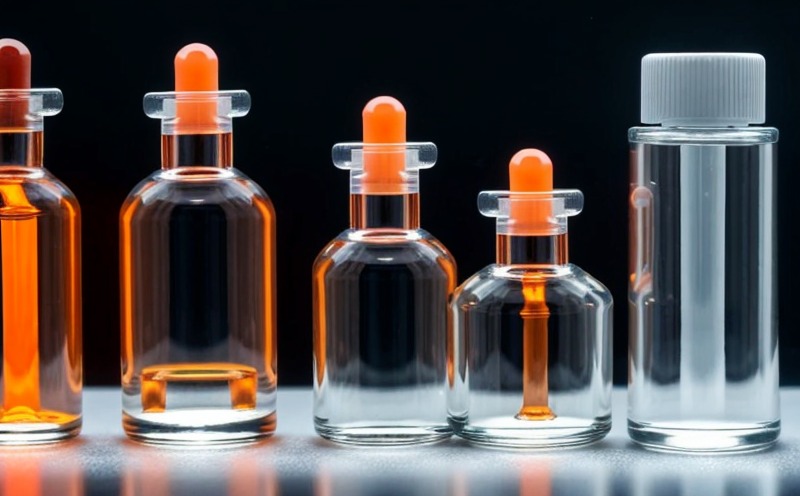ISO 10993 11 Systemic Toxicity Evaluation of Nanomaterials
The ISO 10993-11 standard provides a framework for evaluating the systemic toxicity of nanomaterials. This service is critical in ensuring that nanomaterials used in medical devices do not pose an unacceptable risk to human health.
Systemic toxicity evaluations are essential because nanomaterials can behave differently from their macroscale counterparts due to their unique physicochemical properties and high surface-to-volume ratios. These characteristics enable them to interact with biological systems in novel ways, potentially leading to adverse effects. The ISO 10993-11 standard addresses this by providing a comprehensive approach to assess the potential risks associated with these materials.
The evaluation process typically involves several key steps:
- Identification and categorization of nanomaterials based on their physicochemical properties
- Determination of exposure levels through in vitro and/or in vivo testing methods
- Evaluation of the potential for systemic toxicity using appropriate biological endpoints
- Compilation and interpretation of results to determine whether the nanomaterial poses an unacceptable risk.
During specimen preparation, it is crucial to ensure that the nanomaterials are stable and representative of their intended use. This may involve formulating the material into a relevant delivery system or matrix. The choice of animal models and test systems depends on the specific properties of the nanomaterial being evaluated.
The testing methods used under ISO 10993-11 include both in vitro and in vivo approaches, each with its own advantages and limitations:
- In Vitro Methods: These tests are performed on isolated cells or tissues outside the body. They provide rapid results but do not fully capture systemic effects.
- In Vivo Methods: Involves administering nanomaterials to live animals, which allows for a more comprehensive assessment of systemic toxicity. However, these tests take longer and require careful ethical considerations.
The standard also emphasizes the importance of considering both short-term and long-term effects, as well as cumulative exposure scenarios. This holistic approach ensures that all potential risks are identified and mitigated before materials reach market.
Our laboratory uses state-of-the-art equipment and methodologies to conduct these evaluations, ensuring accuracy and reliability in our findings. We employ experienced scientists who have extensive knowledge of nanomaterials and their interactions with biological systems.
The results from ISO 10993-11 testing are crucial for regulatory submissions, risk assessments, and product development. By providing comprehensive data on systemic toxicity, this service helps manufacturers make informed decisions about the safety of their products.
Why It Matters
The evaluation of systemic toxicity in nanomaterials is essential for ensuring the safety of medical devices and other products that incorporate these materials. Without such evaluations, there could be unforeseen adverse effects on human health due to the unique properties of nanoparticles.
Regulatory bodies around the world recognize the importance of this standard and often require compliance as part of their approval processes. Compliance with ISO 10993-11 not only ensures product safety but also facilitates smoother market entry by meeting international standards.
The standard is particularly important for companies developing innovative medical technologies that rely on nanomaterials. By adhering to this guideline, they can demonstrate a commitment to public health and regulatory compliance early in the development process.
Furthermore, conducting these evaluations helps protect brand reputation and consumer trust. Consumers increasingly demand products made from safe materials, especially those intended for prolonged or repeated contact with the body. Demonstrating adherence to rigorous testing protocols like ISO 10993-11 can significantly enhance a company's image in the marketplace.
From an R&D perspective, this service provides valuable insights into how different nanomaterials behave within biological systems. This information is invaluable for optimizing formulations and enhancing product performance while maintaining safety standards.
Industry Applications
- Medical devices: Evaluating the systemic toxicity of nanoparticles used in implants, catheters, and other medical equipment.
- Bioactive coatings: Assessing the safety of nanomaterials incorporated into biomaterials for drug delivery or tissue engineering applications.
- Pharmaceuticals: Ensuring that nanocarriers are safe for use in drug formulations.
- Cosmetics: Determining whether nanomaterials used in personal care products pose risks to consumers.
The results of these evaluations can inform various stages of the product lifecycle, from initial concept development through final regulatory approval. They help identify potential issues early on and guide necessary modifications or enhancements.
Customer Impact and Satisfaction
Our comprehensive approach to ISO 10993-11 evaluations ensures that our customers receive accurate, reliable data that supports informed decision-making. Our team works closely with clients throughout the testing process, providing guidance on specimen preparation, selecting appropriate test methods, and interpreting results.
We understand that compliance with international standards is vital for many of our clients. By offering this service, we enable them to meet regulatory requirements confidently, thereby reducing their overall risk exposure. This not only streamlines the approval process but also enhances product safety and efficacy.
Customer satisfaction is a key priority for us. We strive to deliver high-quality results in a timely manner while maintaining clear communication throughout each project. Our goal is always to exceed expectations by providing thorough, detailed reports that go beyond mere compliance with standards.





